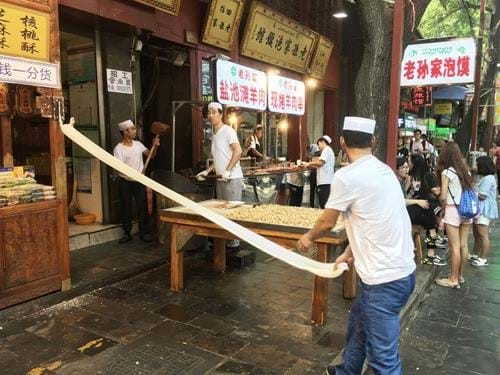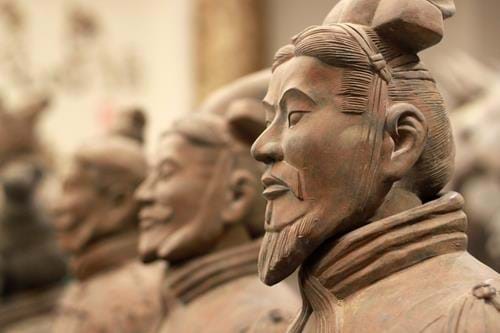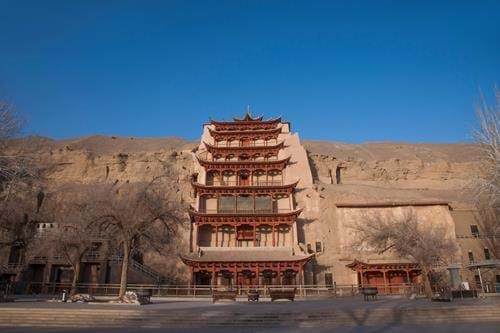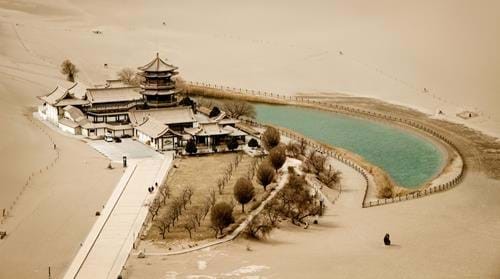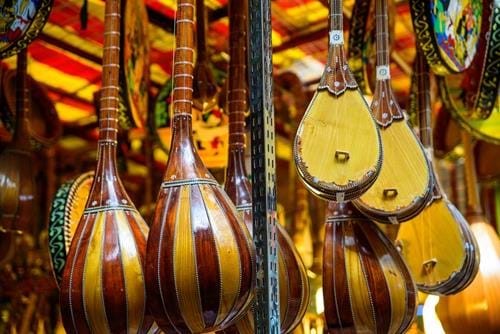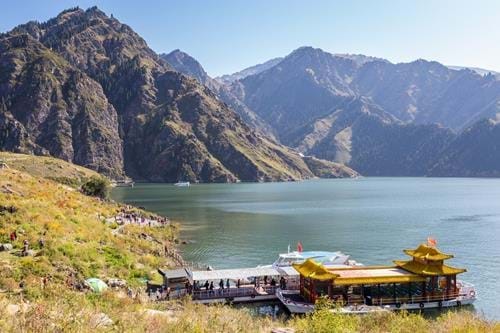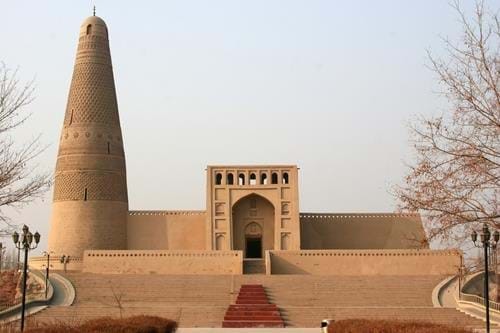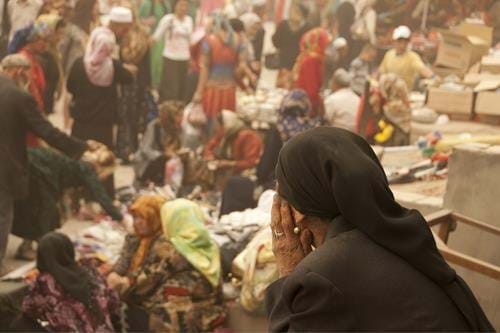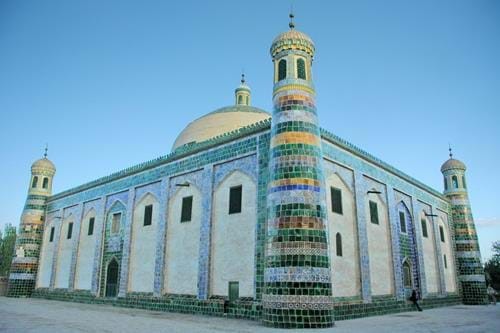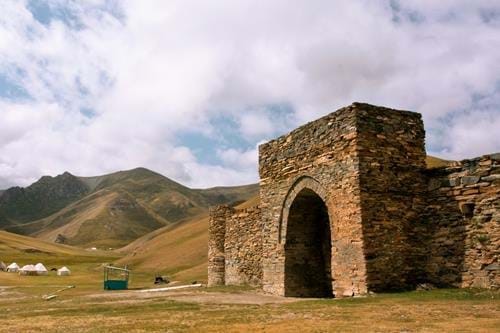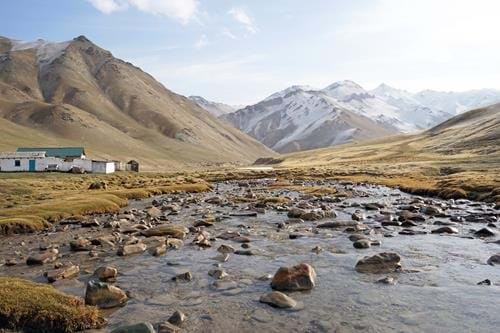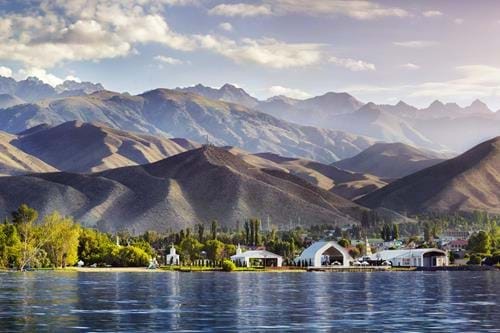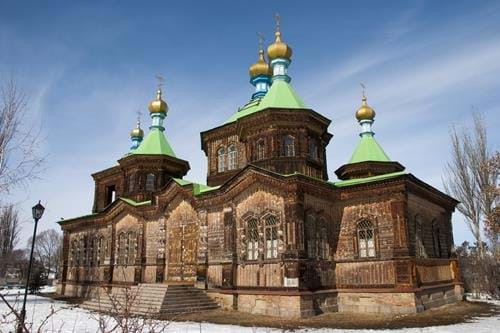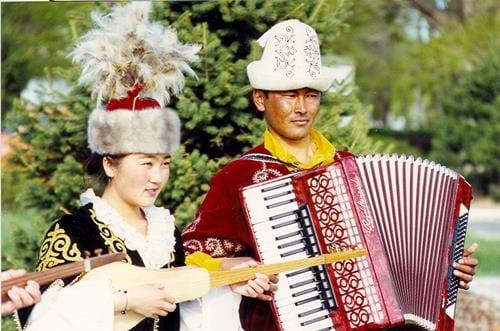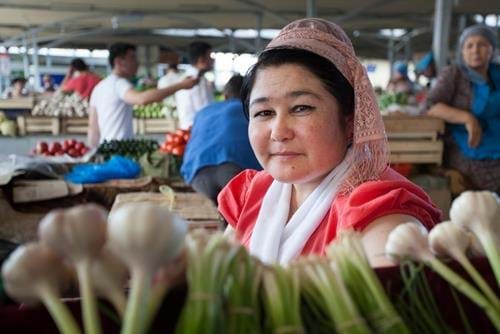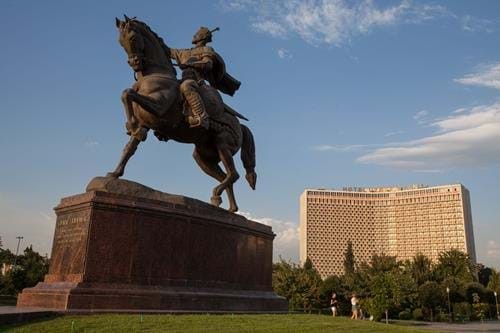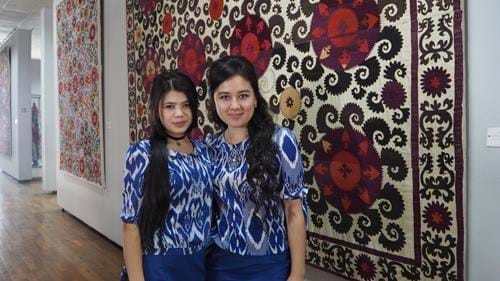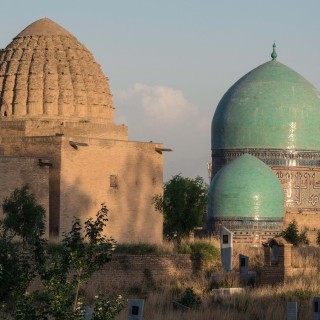Tailor-Made Tour
- Duration28 Days
- Flights IncludedYes
- Prices From £ 7500
 Places Visited :
Xi'an, Dunhuang, Urumqi, Kashgar, Torugart Pass, Song Kol, Issyk Kul, Karakol, Bishkek, Tashkent, Samarkand, Bukhara, Khiva
Places Visited :
Xi'an, Dunhuang, Urumqi, Kashgar, Torugart Pass, Song Kol, Issyk Kul, Karakol, Bishkek, Tashkent, Samarkand, Bukhara, Khiva
For anyone hooked on the romance of the ancient Silk Road, this epic, month-long tour has it all. You get to experience the full gamut of exotic landscapes explored by Sven Hedin and Aurel Stein, and visit all the legendary bazaar cities that once formed stepping stones for caravans crossing from China to the West. Unlike the intrepid souls of former eras, however, you’ll be travelling in great comfort, crossing over the shifting dunes of the Taklamakan in a jet plane rather than on a Bactrian camel (though there will be opportunities for short rides should you wish!).
That said, the route does include its fair share of overland adventure – not least the traverse of the Torugart Pass, the famous passage through the Tianshan range dividing Xinjiang in the far west of China from Kyrgyzstan. Long days on the road are numerous, but never arduous. You’ll be driven in a plush vehicle, and have the distraction of some of the world’s most awe-inspiring scenery to gaze at through your window. We call this gold-standard route between Xian and Khiva our ‘Ultimate’ tour because, by our reckoning, it delivers the finest experience possible over the span of one month.
Remember, this trip can be personalised to suit your travel needs - we can tailor everything from hotel, travel type, duration and more.

